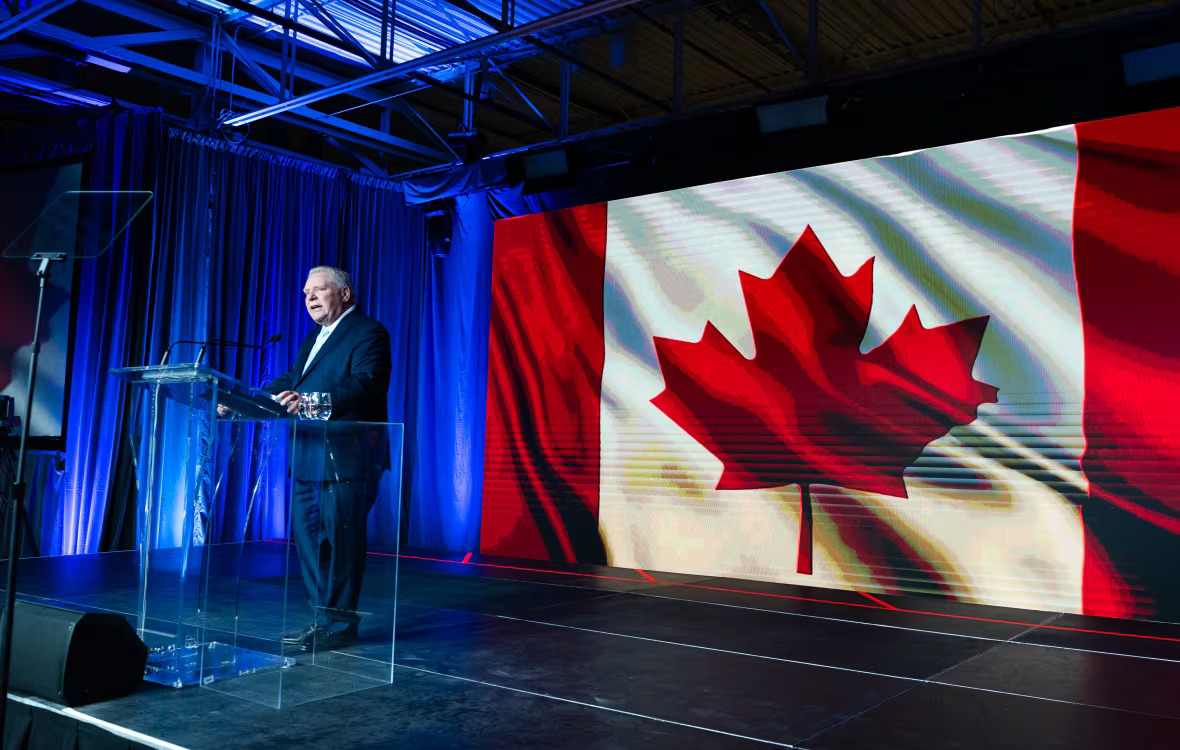Doug Ford Makes History: Wins Third Straight Majority in Ontario
Doug Ford and his Progressive Conservative Party have secured a historic third consecutive majority government, making Ford the first Ontario premier in nearly 70 years to accomplish this political feat.
With 80 of 124 seats won or leading as of early Friday morning, Ford’s victory underscores his unwavering political dominance despite opposition attempts to unseat him. This win places him among Ontario’s most successful premiers, alongside Bill Davis, Leslie Frost, James Whitney, and Oliver Mowat.
“We have made history,” Ford declared to roaring supporters at his election night rally in Toronto. “We promised to do whatever it takes to protect Ontario, and the people have spoken.”
Ford’s landslide victory was not just about maintaining power—it was a well-timed political maneuver. The snap election was carefully crafted around a single, urgent message: Protecting Ontario from U.S. tariffs.
Just weeks after Donald Trump reclaimed the U.S. presidency, he threatened a 25% tariff on all Canadian exports, sparking economic fears across Ontario. Seizing the moment, Ford’s team framed the election around a single question:
“Who is best equipped to lead Ontario through this crisis?”
The answer, according to voters, was Doug Ford.
“I will fight tooth and nail against these tariffs,” Ford vowed during his campaign. “Ontario’s economy and jobs are on the line, and I will work with every level of government to protect our province.”
Ford’s campaign advisors had urged an early election for months, fearing potential political landmines, including:
- The Greenbelt scandal and potential criminal charges tied to Ford’s government.
- A possible federal Conservative government under Pierre Poilievre, which could shift Ontario voters’ perception of the PC brand.
- A vulnerable Prime Minister Justin Trudeau, whose declining popularity created both an opportunity and a risk for Ford’s re-election bid.
The turning point came on January 6, when Trudeau announced his resignation and prorogued Parliament. With no imminent federal election, Ford had a clear two-month window to call a provincial vote without competing against national headlines.
Ford’s campaign messaging was laser-focused. Instead of defending his government’s record on health care, education, or the controversial Ontario Place redevelopment, he kept the spotlight on Trump’s economic threats.
His first campaign stop? Windsor’s Ambassador Bridge, the largest trade crossing between Canada and the U.S.
“This election is about defending Ontario’s economy and ensuring we have a government that stands strong against U.S. tariffs,” Ford told supporters.
His campaign strategy downplayed traditional issues, instead framing Ford as Ontario’s economic guardian. It was a winning formula—and his rivals couldn’t shift the conversation.
While the Liberals and NDP scrambled to change the narrative, they struggled to gain traction:
- NDP Leader Marit Stiles attempted to highlight health care and affordability, but the tariff crisis overshadowed her messaging.
- Liberal Leader Bonnie Crombie tried to position herself as the alternative, but internal party struggles and a lack of name recognition held her back.
- Crombie’s personal defeat in Mississauga East-Cooksville was a major blow to Liberal momentum.
As for Ford? His strategic silence worked in his favor.
- He avoided unnecessary media scrutiny.
- He went nine days without a press conference—and it didn’t hurt his poll numbers.
- He granted zero interviews to Ontario-based political reporters but spoke at least 10 times to major U.S. networks, reinforcing his economic leadership image.
Ford wasn’t without missteps.
- He was caught on a hot mic saying he was “100% happy” about Trump’s election.
- He joked about sending criminals to “Sparky”—a nickname for the electric chair.
Yet, none of it resonated enough to shift voter sentiment.
Why? Because Trump’s unpredictability loomed larger.
- In just one week, Trump signed, paused, and revised tariffs on Canada.
- Ontario voters saw the U.S. situation as volatile—and Ford as a steady hand.
Ford’s third term comes with bold promises and heavy spending commitments, including:
- $1.8 billion to ensure universal primary care for all Ontarians.
- $2 billion for municipal infrastructure to accelerate housing development.
- Major transit expansions, including:
- A new tunnel under Highway 401.
- The removal of Highway 407 tolls.
- New GO Train routes across the province.
- The construction of 30 new schools and expansions to 15 existing institutions.
Despite these commitments, Ford’s spending plans could mean a deviation from Ontario’s budget-balancing strategy.

